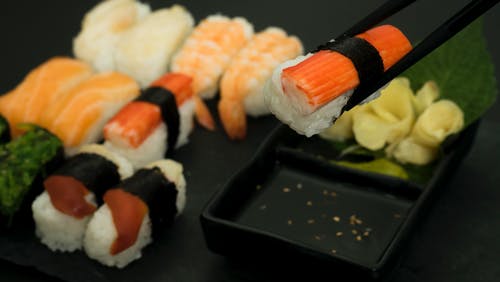
Posted: Sep 17, 2021

The following tips can separate the uninitiated from those in the know, whether you're dining at an economical chain restaurant (which is closer to the dish's street-food roots) or the rarefied establishments of Tokyo's upscale Ginza neighborhood.
Sushi's origins in Japan date back to the 10th century. Narezushi, the most primitive form of the famed food, was made with fermented fish that was preserved with salt and raw rice.
Edomae sushi (Tokyo style), which is what most are familiar with today, is thought to have originated in the 1800s. It typically revolves around nigiri -- fish with pressed rice -- which can be topped with several dozen types of seafood and other ingredients, not just fish.
Sushi chef training is intense and requires long hours. Chefs often apprentice for several years before they're permitted to handle pricier cuts of fish.
With that in mind, let's start at the top: Sushi Sawada, located behind Tokyo's most prestigious intersection of Ginza 4-chome.
With two Michelin stars and only seven seats, Sawada is a shrine to sushi -- and to straight-talking master Koji Sawada's continuous quest for perfection.
Sawada seasons his ingredients with his own soy sauce blend or a sprinkle of sea salt before combining them on the rice, so he says there's no need for additional soy sauce to dip.
But as the customer is king/queen, Sawada provides sauce on request. He suggests the best way to use it is first to take the sushi and then turn it upside down and dip the fish side.
There's a practical reason for inverting your sushi: the rice will fall apart if it's dipped directly. It will also soak up too much sauce, ruining the flavor balance. The flavor is best if the fish only lightly contacts the sauce.
Then pop it into your mouth.
"The fish should touch the tongue first," Sawada says.
Most sushi-ya (sushi restaurants) expect customers to dip, and you'll find soy sauce dishes on the counter. Soy sauce is called murasaki, meaning "purple," in sushi-speak.
By Mark Robinson
09-16-2021
Source and complete article by: cnn.com
Go-Wine's mission is to organize food and beverage information and make it universally accessible and beneficial. These are the benefits of sharing your article in Go-Wine.com


The Wine Thief Bistro & Specialty Wines is a locally owned small business in downtown Frankfort, IL offering world class wines in a relaxed, casual gathering spot for friends and family. Offering world class virtual tastings and touchless carryout.
https://www.twtwineclub.com/aboutus
Go-Wine 25 Great Wineries in US selection prioritizes quality, value and availability.
www.go-wine.com/great-wineries-in-america
Tasting wine is a nice experience, but visiting the places in which wine is made is a magic moment. Available in New York City for touchless pickup.